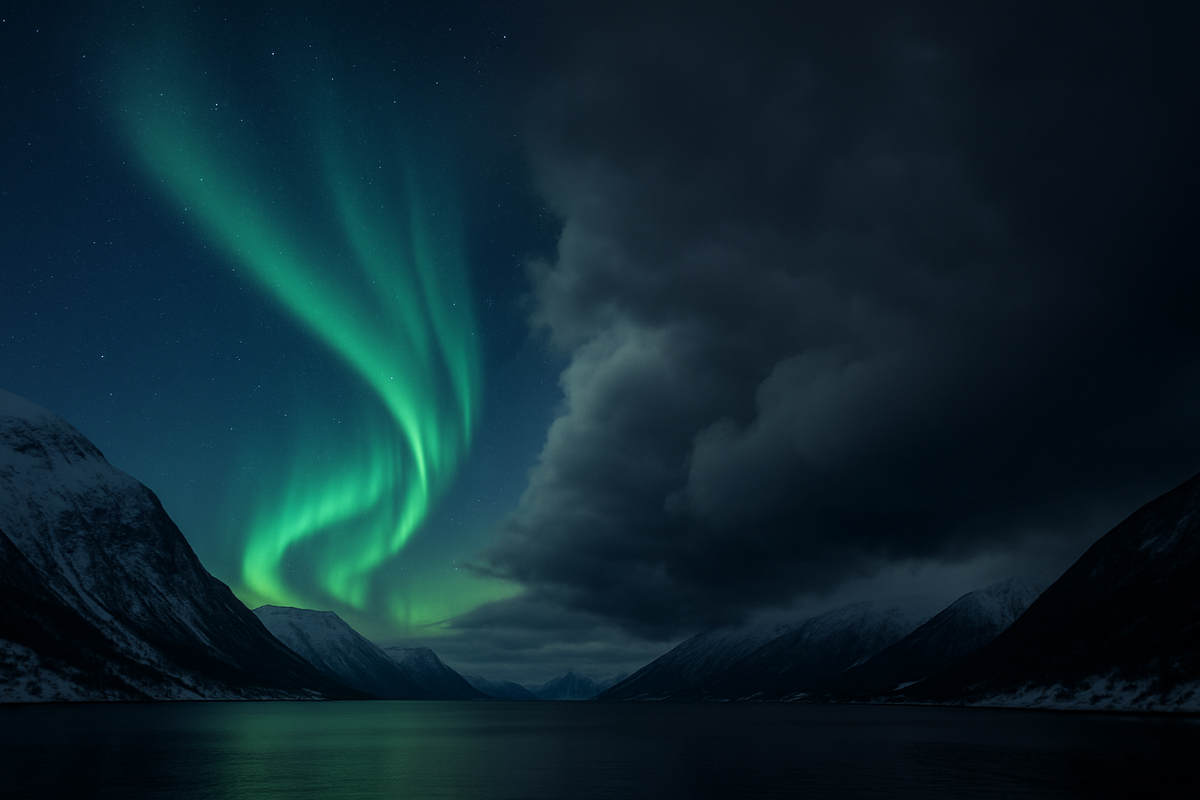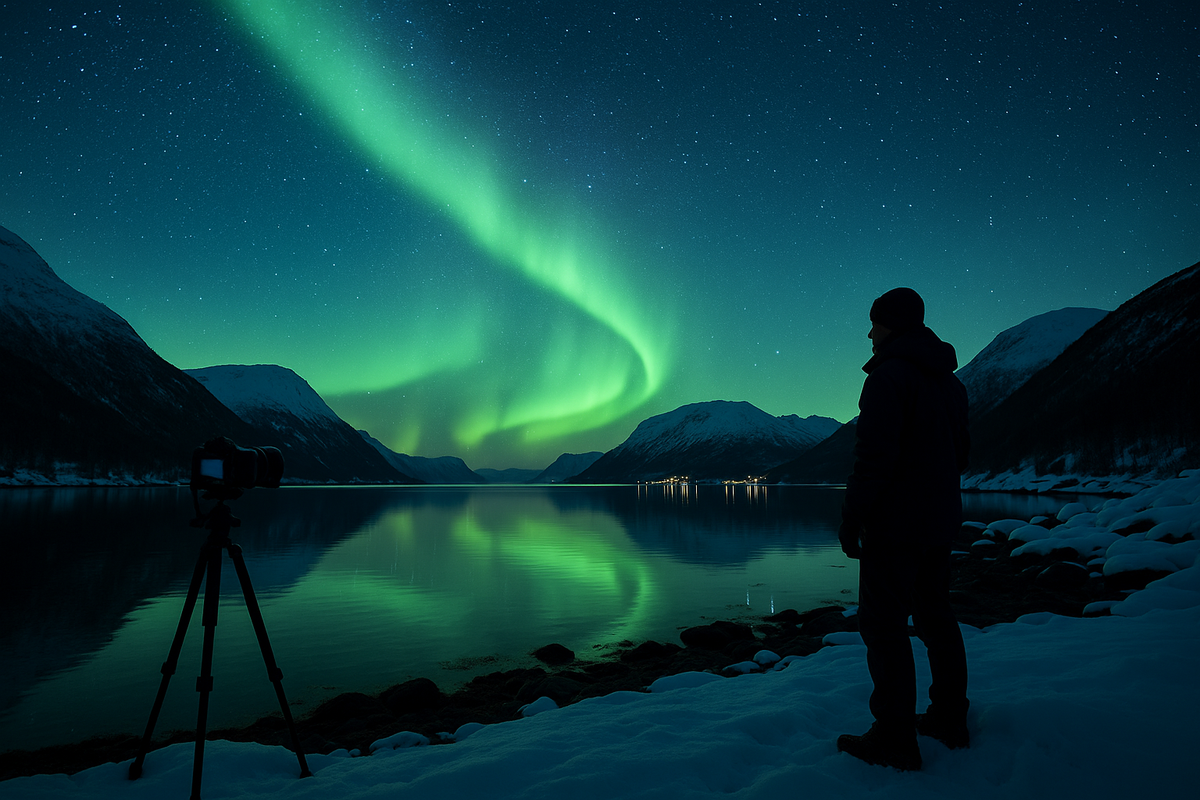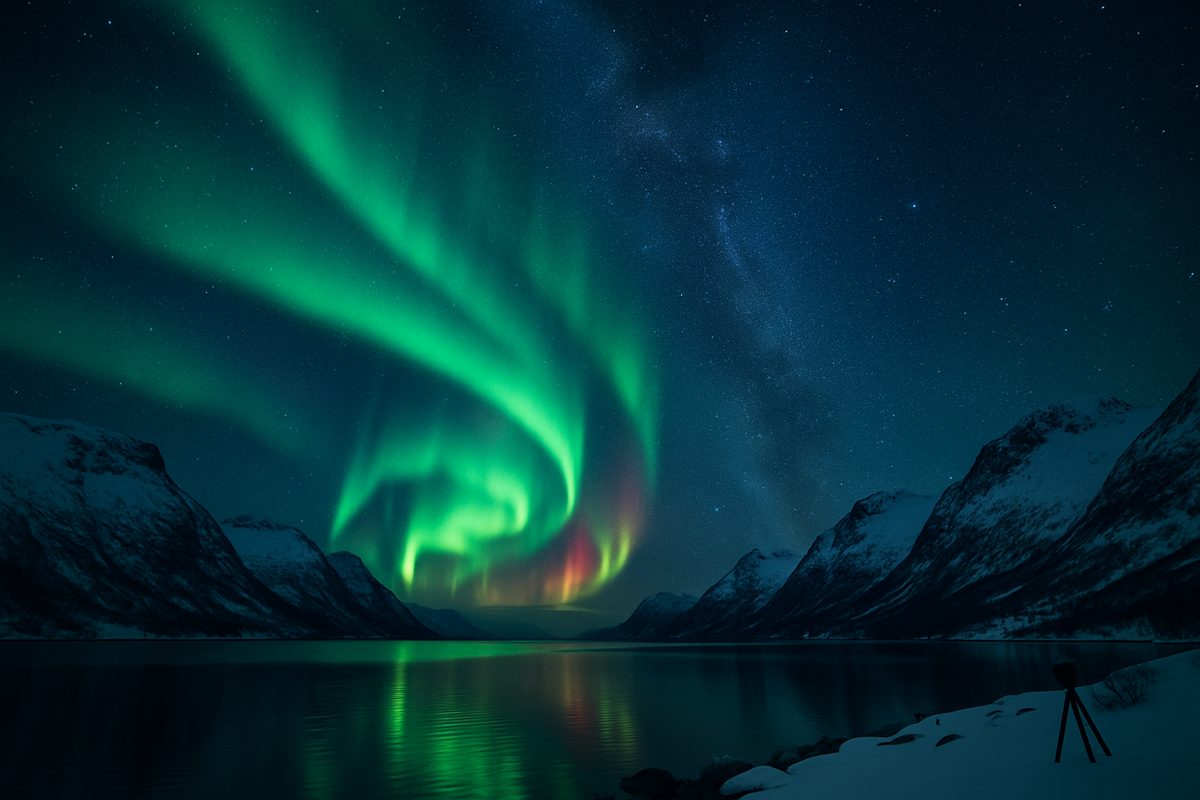🌠📲 Aurora forecast: how to read the KP index and not miss out
You flew to Norway, planned everything, but instead of the promised northern lights, you saw only a cloudy sky? Learning how to read forecasts correctly and understand the main indicators of aurora activity is the key to avoiding disappointment and making the most of your experience! Today, we're thrilled to dive into the fascinating world of the KP index, explore the intriguing nature of the AE index, and uncover the apps and websites that deliver the most accurate forecasts. Even with a high KP, it's essential to understand that an exceptional show in the sky is not a given.

📊 What is the KP index and how do you read it?
The KP index is the main indicator of geomagnetic activity, directly related to the strength of the northern lights. The scale ranges from 0 to 9:
● KP 0–1: The aurora is very weak and almost impossible to see.
● KP 2–3: The aurora is visible in northern Norway (Tromsø, Lofoten, Narvik) when there are no clouds.
● KP 4–5: Active aurora, clearly visible as far south as central Norway (Trondheim).
● KP 6–7: Bright aurora visible even in Oslo and Bergen under clear skies.
● KP 8–9: Extremely powerful geomagnetic storms, aurora visible in Central and Southern Europe.
📌 Why KP≥3?
The KP≥3 index is considered the minimum benchmark, as at lower values the aurora is often too weak or short-lived.
However, even a high KP index does not guarantee success if the sky is overcast.
🌥️ Why is cloud cover more important than the KP index?
The Northern Lights occur at altitudes of 80 to 300 km above the ground, while clouds form much lower down (around 1–3 km). Even the most powerful aurora will not break through a thick layer of clouds.
Tips for cloudy weather:
- If the KP forecast is high but there's more than 70–80% cloud cover, have a plan B ready: move to areas with less cloud cover or change the date of your trip.
- If the sky is clear, you are more likely to be successful, even if you only have a moderate KP (3 to 4).
📱 Best apps and websites for tracking forecasts
There are several proven tools to help you navigate aurora activity and weather.
🔸 Aurora Forecast (My Aurora Forecast)
● Clear visualisation of the KP index.
● High activity alerts.
● Map of the current aurora location.
🔸 Norway Lights (from Visit Norway)
● Very user-friendly interface for beginners.
● Specific advice for regions in Norway.
● Assessment of chances for the coming days and hours.
🔸 SpaceWeatherLive.com
● Professional KP and AE index data.
● Real-time activity graphs.
● Forecasts for several days ahead.
📡 What is the AE index and is it necessary for ordinary tourists?
The AE (Auroral Electrojet) index is another way of measuring how active the aurora is. It shows the electric currents at the Earth's poles. Professional observers and scientists use it more often.
Do tourists need it?
The AE index is not important for the average tourist. If the AE value is high (more than 500 nT), it shows that the aurora may be more active and able to move around. Most travellers only need the KP index and cloud forecast.

📸 How not to miss the aurora and photograph it correctly?
If you are following the forecast and notice that there will be a lot of activity at night, get your camera equipment ready early:
- Camera: Set the camera to "M" (manual) mode.
Choose a shutter speed of between 10 and 30 seconds.
Set the ISO to 800–3200.
Open the aperture as wide as possible (f/2.8–f/4).
- 📱 Smartphone: use night mode, hold the device as steady as possible, or use a tripod.
- 🔭 You will need a tripod for any night photography, even if your camera has a night mode.
🌖 Moon phases: friend or foe of the Northern Lights?
The moon's phase affects how bright the northern lights are. At night, the moonlight can sometimes make the faint auroras less visible, but it does make your photos look really nice. The best time to see the northern lights is during a new moon or the first or third quarter of the moon.
● Check the moon phase calendar in advance.
● If the moon is full, try to choose a location away from its direct light.
🌨️ What to do if the forecast is perfect but the sky is cloudy?
Plan B in case of cloudy weather:
● Check the cloud cover in neighbouring regions via Yr.no (the best Norwegian weather website). Sometimes it is worth driving 1–2 hours to find clear skies.
● Have a backup route ready in advance.
● Follow the latest reports from tourists and guides on Instagram using hashtags such as #northernlights #aurora #tromso.
🛰️ What to expect from the aurora in the coming years (2025–2026)?
The Sun is currently in the part of its 25-year cycle where it is getting brighter, and this is expected to reach its peak around 2025. This means that there will be more aurora activity, and trips to Norway in the next few years will be very successful.
There will be powerful solar flares, which will make the northern lights brighter and more frequent.
✅ Summary and tips:
● Keep an eye on both the KP index and cloud cover.
● Use apps: Aurora Forecast, Norway Lights.
● Study the moon phase chart.
● Plan your route with alternative viewing locations in mind.

🎯 Share your experience!
I would absolutely love to know what amazing apps and websites you use to catch the awe-inspiring Northern Lights in Norway! Have you ever had a high KP index let you down because of bad weather? We can't wait to hear all about your adventures in the comments!
We can't wait to share the best tips and stories from our readers in our next articles! 🌟





1 comment
Log in to leave a comment